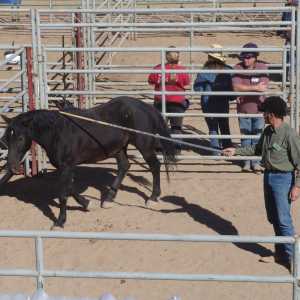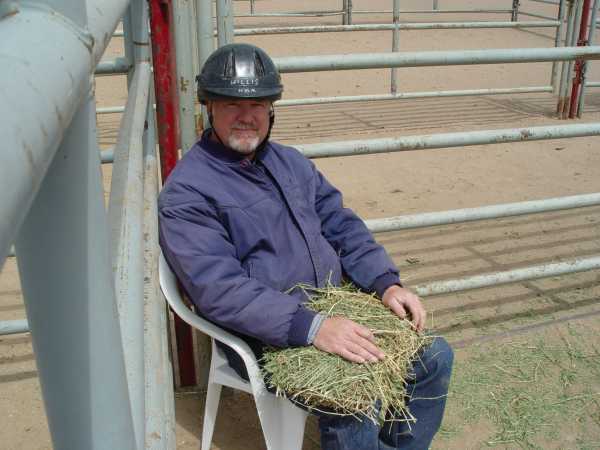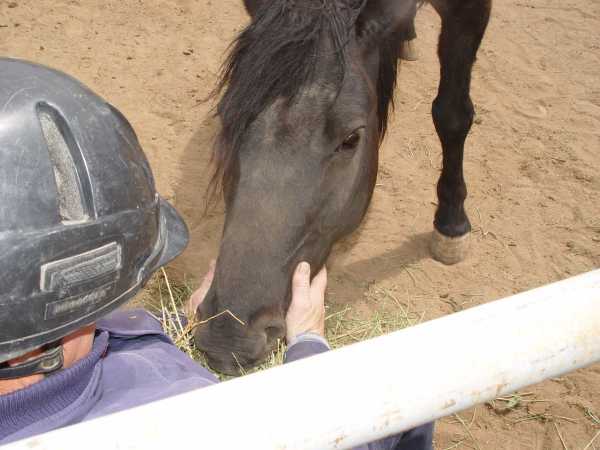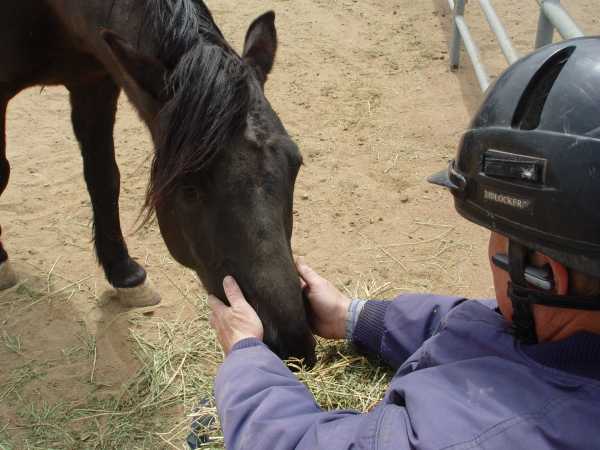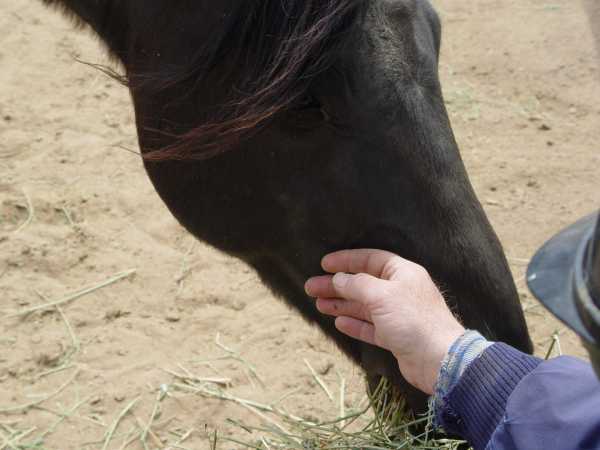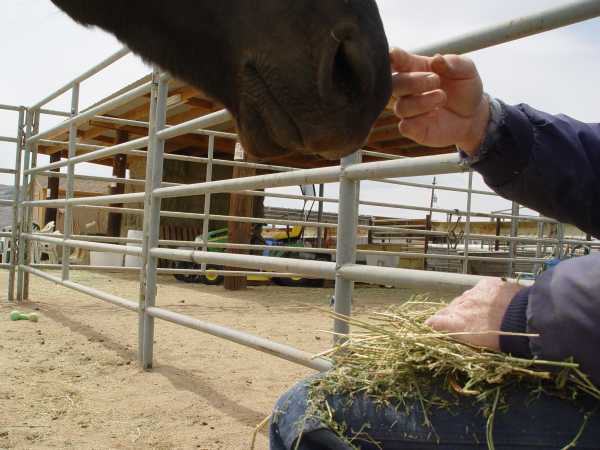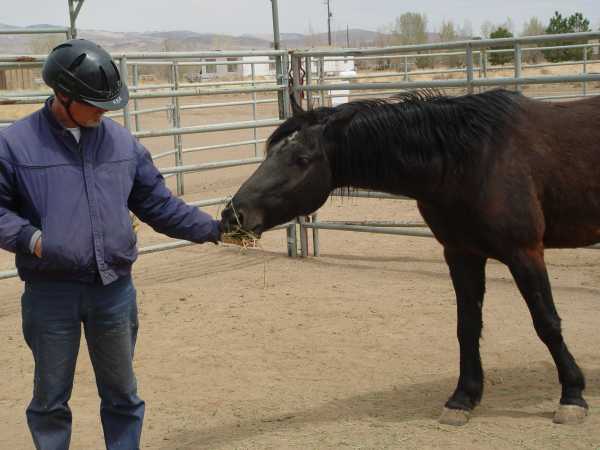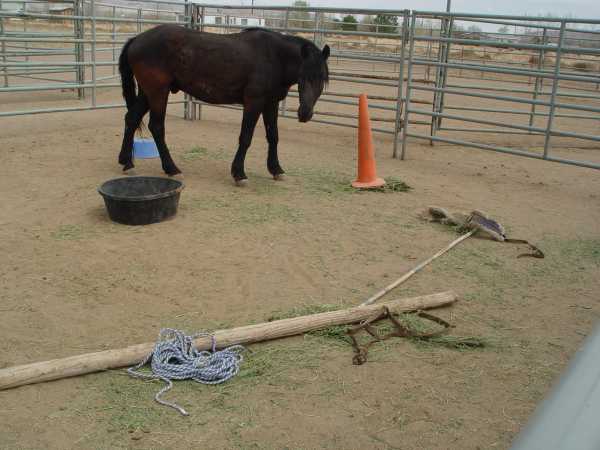KBR Horse Net
|

|
|
Black Bart was one of the BLM horses BLM brought to Wild Horse Workshop 06 in Stagecoach, NV. He ended up not being adopted at the workshop and was returned to the BLM contract corrals in Carson City. Nearly 6 months later a wild horse enthusiast in Illinois arranged to adopt Bart and the volunteers agreed to work with him until he could catch a ride from Nevada.
Bart had been worked about 6 hours total during the workshop, used primarily as a "lesson horse" for participants to try new gentling skills. Being mature (6 years old) and level headed, he could tolerate mistakes without getting all wound up. Now as a 7 year old having not really been handled by humans for months we thought it would be interesting to see how much Bart retained. |
Bart at the Workshop.
|
Please note: As a "practice" horse for volunteers to work with, Bart's initial training will not likely be as formal as we might conduct with a single trainer and horse. In these kinds of situations we initially emphasize helping the horse get used to being around multiple people, creating situations where the volunteers "read" the horse's responses to various stimuli, then pursue more formal training techniques once these initial "grounding" activities have concluded. We also focus on encouraging the horse to think, which better prepares him to accept formal groundschooling and saddle work.
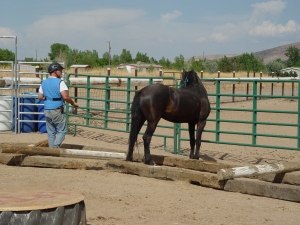
Some of these approaches may seem odd but they produce results. The object of these first few sessions is to create a positive atmosphere and to observe how this older horse can be motivated to be as positively interactive with people, much as a yearling might do. We may have to correct the horse (make the wrong things hard while making the right things easy) but positive motivation is our emphasis. As a result by our 4th session with Bart he's actually painting pictures and by the 7th session he is taking obstacles in our obstacle course both on lead and off lead. |
| EVALUATION DAY |
|
The day before we started basic lessons we decided to see where Bart was emotionally. He would let us touch his nose and would take hay from us, so he wasn't too uncomfortable around humans, but other unfamiliar objects introduced into his corral got him pretty snorty and upset, so we decided to desensitize him a little bit before school started.
One thing that particularly bothered him was a white plastic chair, so he got to take some hay from the chair and from people sitting in the chair until he had approached it enough times that it was no longer worrisome. (We don't use food a great deal in general training but sometimes for "introductions" to scary objects food is a useful motivator, causing the horse to think about the situation and develop a strategy rather than simply react. Bart also had to deal with being touched to get to the hay and went from being wary about hands to nudging them out of the way. You want hay? Approach the chair.
|
